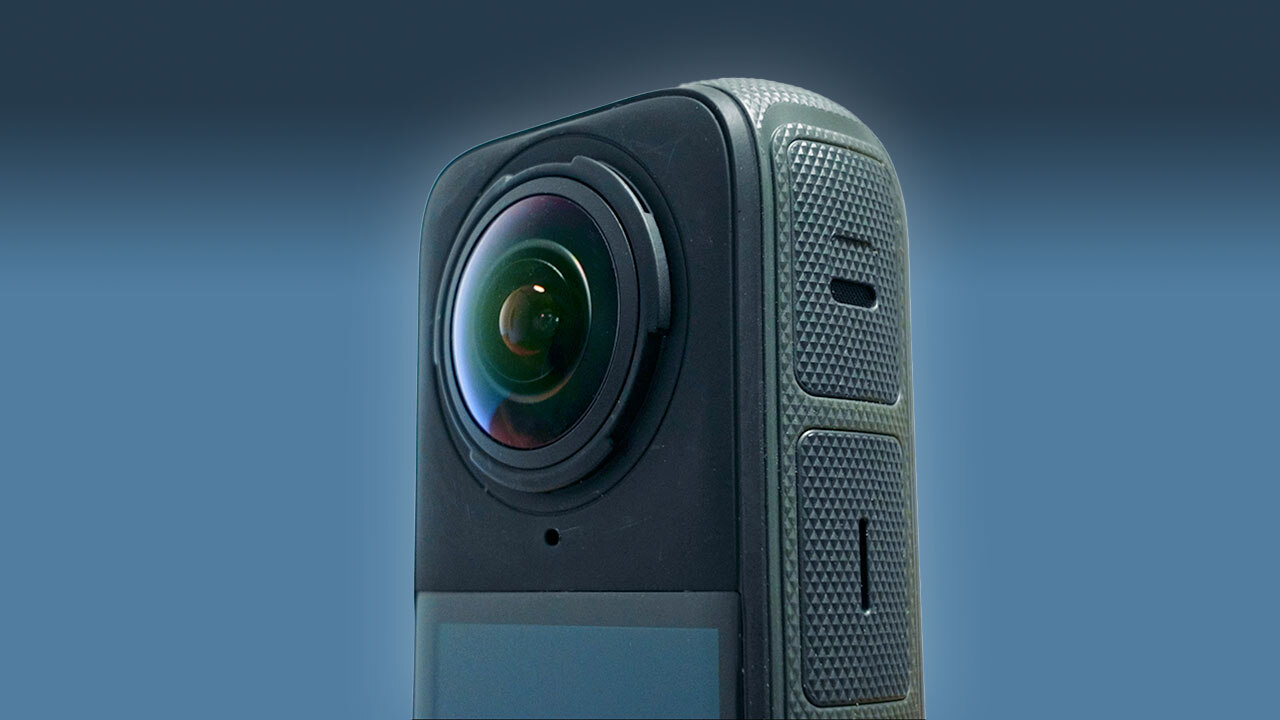
There's a new 360 camera on the block, and it promises a big increase in resolution and quality. Simon Wyndham takes a look at Insta360's new X4 to see if it really is worth the upgrade.
360 cameras are great fun to use, and the footage that they produce is incredibly flexible due to the way it can be totally reframed in post. Stabilisation is also unmatched by any other type of camera. But, 360 cameras have always had an achilles heel, resolution.
You see, 360 cameras require two sensors and therefore two lenses, which each capture a 180-degree angle of view. Even if both sensors feature 4k resolution, or even 5.7k, the final reframed image will only ever be 1080p or thereabouts. Crucially, due to the angle of view being captured, it is rare for the reframed image to really even feature 1080p worth of detail and quality. In other words, despite the flexibility of the footage, 360 cameras until now have lagged behind their standard camera brethren. At least in the consumer sphere at any rate.
Enter Insta360's new X4, a consumer 360 video camera that is capable of recording an 8k 360 panorama, thereby theoretically offering a significant boost in final reframed image quality.
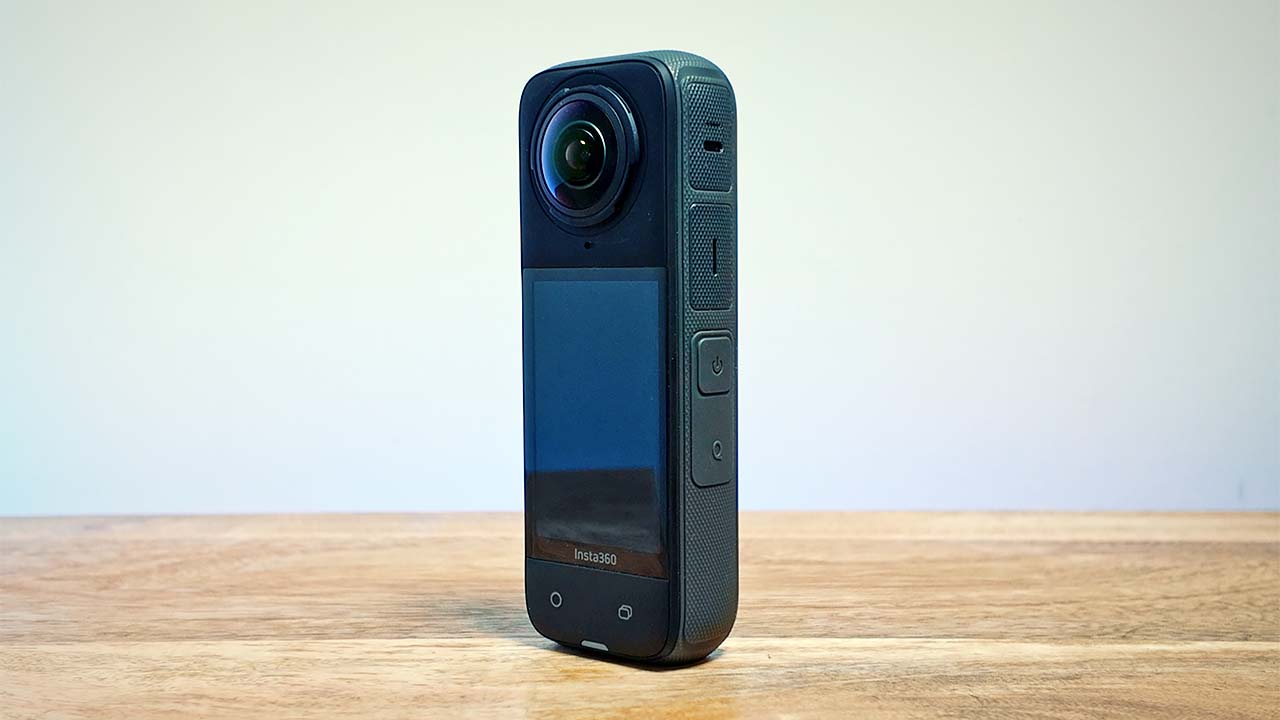
The Insta360 X4 is bigger than the previous X3 model
Insta360 X4 specs and features
The X4 features 8K recording, as previously mentioned, which maxes out at 30fps. Apparently, the X3 did in fact feature the same sensor as the one found in the X4, but the defining difference that makes 8K possible is the inclusion of a new 5nm process AI chip. This boost in resolution capability has a knock on effect in other modes, too. For example, it is now possible to record 4K 360 video at up to 100fps and 5.7K at up to 60fps.
Other differences from the X3 include a new tougher body that features Corning Gorilla Glass on the LCD touchscreen, and a much larger 2290 mAh battery that promises 135 minutes of recording in 5.7K 30p mode and 75 minutes in 8K.
A neat new addition is the inclusion of lockable lens protectors. Previously, users had to attach sticky lens protectors which were difficult to reuse. The new lens protectors attach using a bayonet style system, making them much more convenient and reusable. Additional upgrades include 11MP timelapses and 8K time shift video.
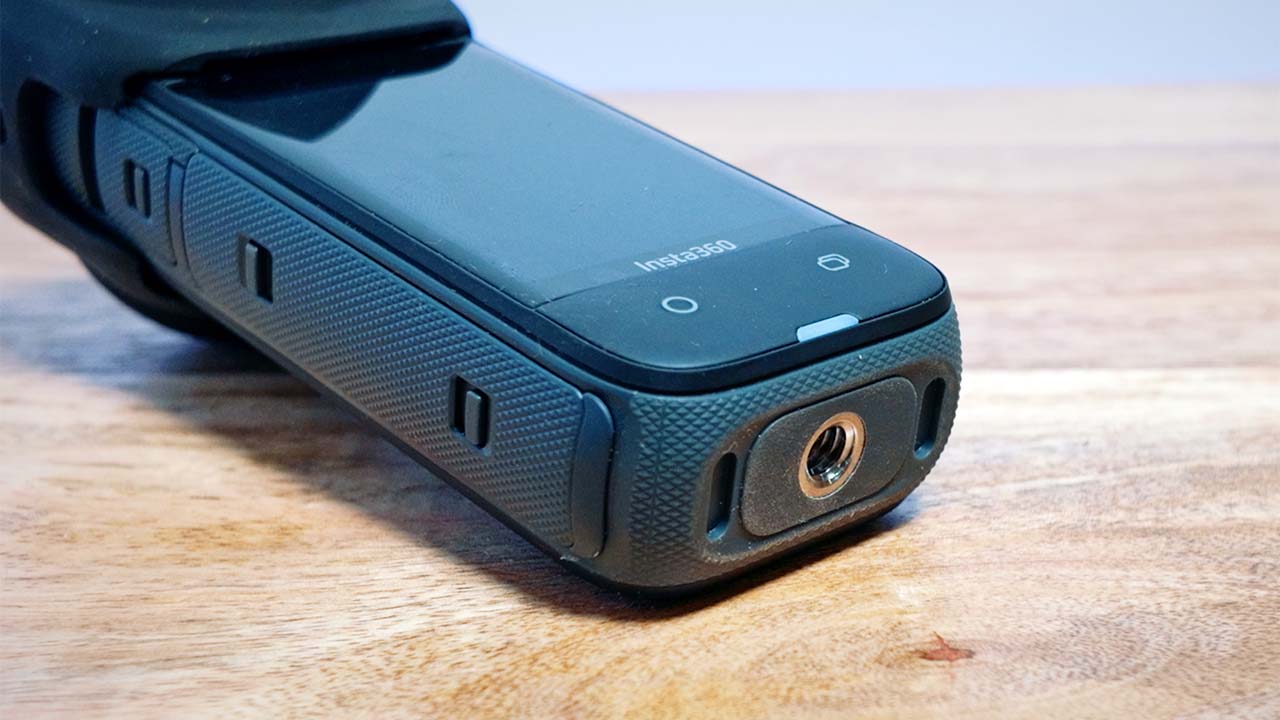
The 1/4" mounting screw on the base of the X4 makes mounting easy
First impressions and using the camera
The X4 looks almost identical to the X3 at first glance, although in reality it is slightly bigger to accommodate the larger battery and better thermal qualities. Switching the camera on reveals Insta360's familiar user interface, which stays pretty consistent across its camera range.
The LCD screen on the X4 is around 2.5" in size, and is bright and easy to view even outside in the sunshine. The touch interface is also very smooth and responsive to use. The rest of the construction of the camera has a quality feel to it, with the sides of the camera featuring a textured surface for hand grip. Although most of the time you'll be using the X4 on some sort of mount or selfie stick.
The base of the X4 features a 1/4" screw thread, which makes attachment to accessories easy, although it is puzzling as to why the magnetic mount seen on the Ace Pro isn't present here. It is possible to purchase an adapter to give compatibility with the magnetic mount, but it would have been good to see it on the X4 as standard.
A nice touch is the quick mode select button. The X4 allows you to set up custom image and mode presets, and the quick select button lets you cycle through them quickly and easily without needing to use the touch screen. This will come in very useful in wet conditions or in the cold when you're wearing thick gloves.
The X4 comes with a pair of standard lens protectors, and these attach via the new bayonet style system. I found that it took me a few goes to get that on, since the fitting is quite stiff and it's difficult to be able to grip onto the protectors to get enough torque. You'll need to be prepared to wipe your finger prints off them once they've been attached.
Despite the tight fitting, the lens protectors are not waterproof. If you submerge the camera in water with them attached, they will quickly fill up. Therefore, for water sports you'll need to use the camera either without any protection, or use the new Invisible Dive Case, which adds a fair amount of bulk.
Battery life is very good. While I didn't time things exactly, the X4 does seem to be quite power frugal, no doubt helped by that 5nm processor. It would appear that Insta360's quoted battery life figures aren't too far wide of the mark in reality. The camera can also be charged to 80% in around 35 minutes, too.
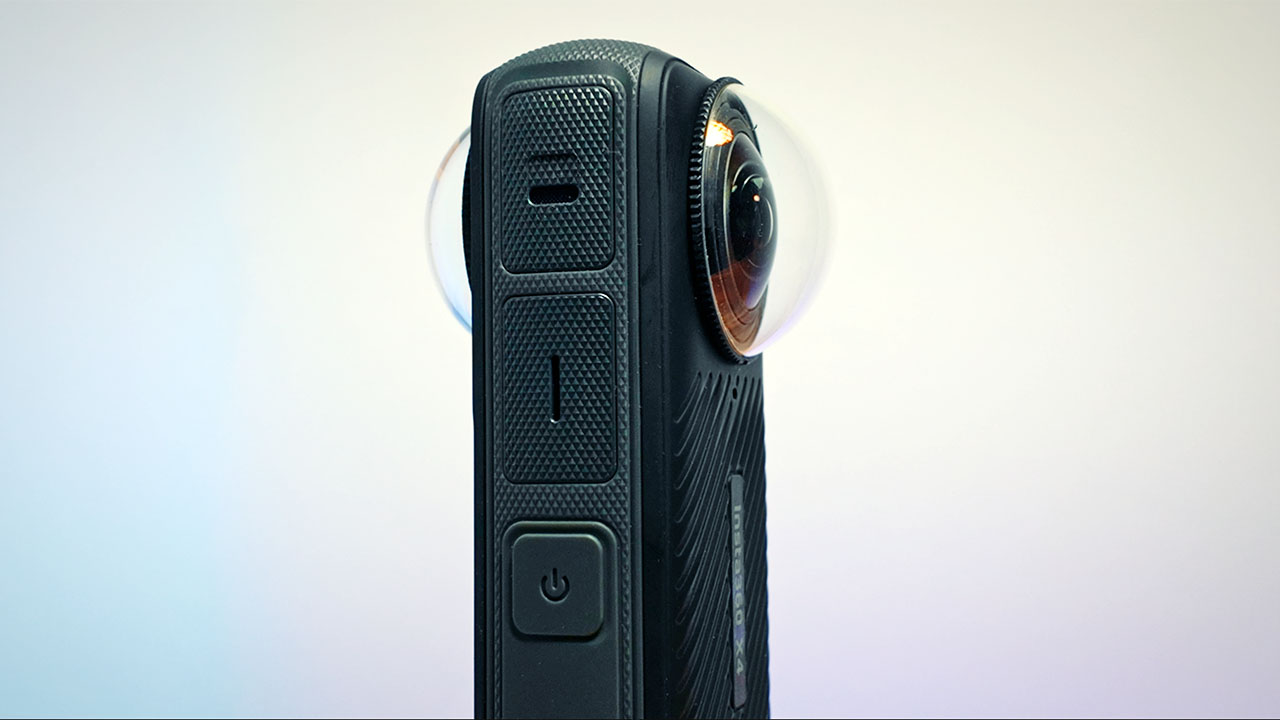
The premium glass lens protectors on the X4
Audio
I'm not big on audio when it comes to action cameras, mainly because I don't really expect amazing audio quality. That said, the mics on the X4 seem to pick up voices well, although as per pretty much all cameras of this type, to get the best audio you'll need to attach some sort of wind screen, or use a third party mic such as the DJI Mic 2, with which you can record 32-bit float audio off camera.
Using the X4 for action
The X4's size and shape does limit it somewhat for some types of action shot. For example, mounting it on a helmet for kayaking is a bit impractical and unwieldy. However, it can be used quite well in a chest-mounted position for sports like mountain biking or other cycling activities. It also works well mounted on a pole, for example getting shots on a SUP.
In terms of my chosen sport of kayaking, a 360 camera like the X4 works best when mounted to the kayak, either on a pole or to one of the grab handles, safety permitting. As I mentioned, helmet mounting is difficult due to the vertical configuration of the camera. Although there are ways that it might be possible to position the camera flatter to the surface of the helmet to make it lower in profile. But, the need to have the X4 inside the Invisible Dive Case just in case of full submersion whilst also having protection mitigates any gains in that regard. Although if you were prepared to risk it, you could mount the camera bare, but it's a high risk scenario that could leave you with broken lenses.
In general, the X4 is best suited to third person views, or placing at the side of a track to capture pass-by shots and the like. Unfortunately it will always be the case that 360 cameras' greatest asset enabling the capture of everything at once is also their biggest achilles heel, and that is the protruding lens. If Insta360 can make a water sealed lens protector in the future, that would go a long way to making a camera like the X4 more able when it comes to risky mounting scenarios.
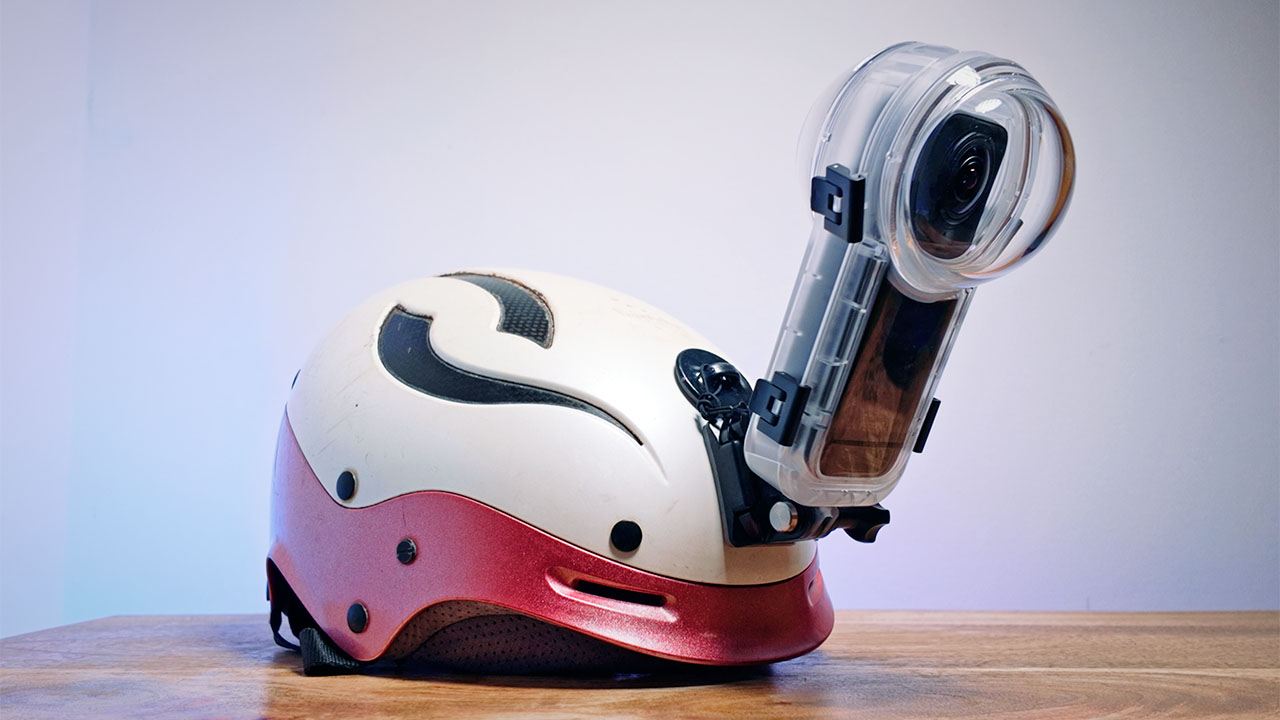
Helmet mounting for watersports isn't very practical!
That said, the X4 does have a number of single lens modes, which allows it to be used more like a traditional camera. There's a Free Frame mode, which works in the same way as it does on cameras like the GO 3 and Ace Pro. Free Frame mode gives you the ability to record footage like a traditional action camera, except you can change your field of view and fine tune the framing in post.
Me mode is another single lens setting that is hugely useful for selfie style shots. Me mode is designed to be used on the end of the invisible selfie stick, and automatically keeps you in frame. One again, like Free Frame mode, there is some flexibility in post to reframe the image. Both these modes can be shot up to 4K in resolution, although FreeFrame mode will go up to 60p while Me mode maxes out at 30p. In order to get higher frame rates you'll need to drop Me mode down to 2.7K to achieve 120p, while Free Frame maxes out at 60p no matter what resolution setting is used.
Lastly, regarding the thermal performance of the camera, I suffered no shutdowns, although being British springtime that means that temperatures are not exactly 'warm' right now. That said, the X4 comes with a detachable thermal frame that's designed to help the camera perform for longer in static indoor scenarios.
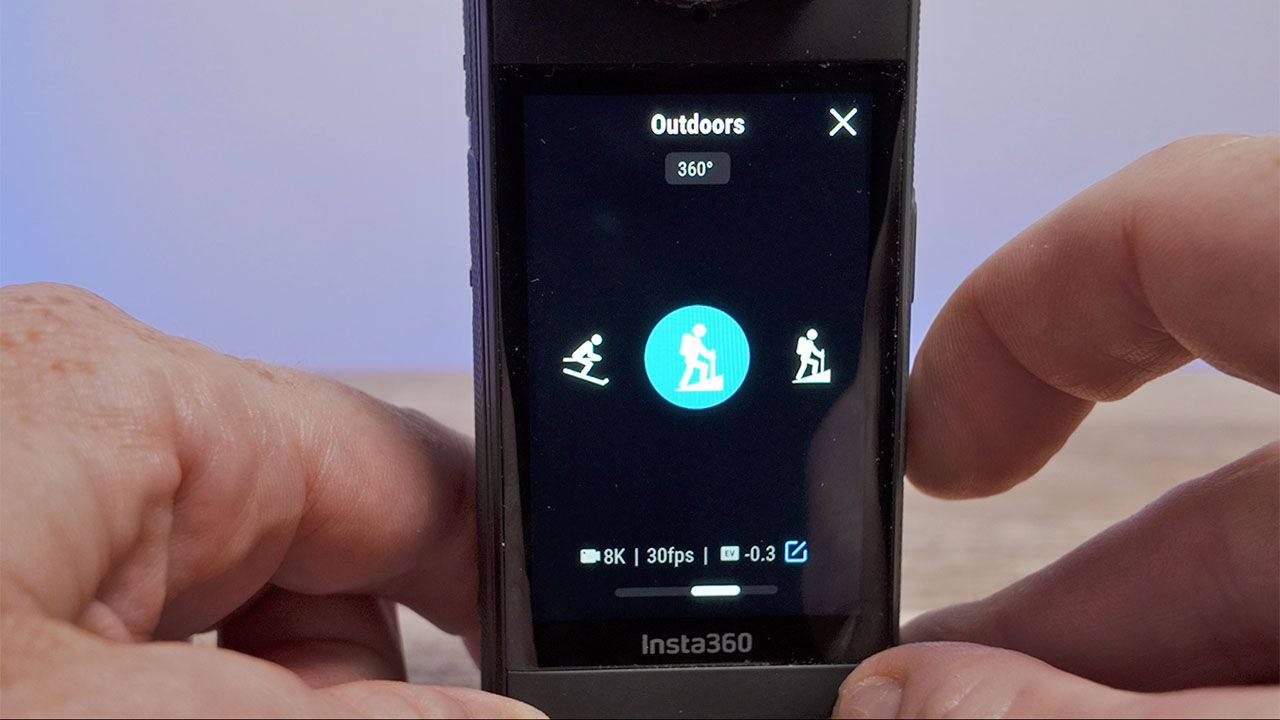
The Insta360 X4 interface is easy to use, with custom presets possible as well.
8K, does it make a difference?
Image quality on the X4 is noticeably improved over the X3, due to the increased resolution. If you want to use the camera in low light or you want higher frame rates than 30p, you'll need to drop the resolution down to 5.7K or 4K, which brings with it a drop in image quality.
Using 8K for 360 gives you much more in the way of freedom for reframing the footage in post, such as when you might want to use a tighter angle of view. It's notable just how rough previous models look in comparison. It also now means that you'll be able to intercut your 360 footage more seamlessly with other types of cameras.
Tree branches now actually look like tree branches rather than being a load of compression mush. There's real detail in there. And yes, if you zoom in far enough the image will fall apart, as it would with any other action camera. But the fact is that 8K on the X4 isn't just marketing hype, it really does give a tangible improvement to the image and what you can do with it.
Now, the eventual reframing of your footage won't give you a true 4K image, but it will give you a 2.7K one, which up-converts quite nicely to 4K.
One thing to note, however, is that if you're using the lens protectors, you'll need to be careful of the lighting conditions. The lens protectors will not only show up any dust particles, but at certain angles you can end up with some strange looking flaring. The compromise between protecting the lenses and suffering from image artefacts is a decision you'll need to decide upon on a case by case basis. Changing the angle of the camera in relation to the light source can help matters.
The 11MP timelapse capability is a useful one, and allows a huge amount of creative freedom when it comes to reframing. It's easy to setup, and it's great to be able to pan around a timelapse image at will. I did find that the 11MP timelapse mode was a little over sharpened, and setting the picture profile sharpness down to low didn't seem to have any effect, so for a future firmware I'd like to see this corrected.
Conclusions
So, who should be looking at buying the Insta360 X4? Well, if it's going to be your first 360 camera then it's a no-brainer. There's simply no point looking elsewhere. If you own an X2 and you are using your camera a lot, then the X4 will give you a massive jump in image quality and general capabilities. The big question is whether you should upgrade if you own the X3?
This is a more nuanced question, because the X3 is still a very good camera, despite the lower resolution. I would say that if you are someone who uses their camera to the max, or you really do want the absolute best image quality, then yes, the upgrade is likely worth it. But, if you're a casual user who mostly uses it for capturing holiday or social moments and uploads mostly to Instagram, TikTok or Facebook rather than needing a 4K YouTube result, then the X3 will do you just fine.
Overall, the X4 is a high quality 360 camera that really does make the grade in terms of overall capability and flexibility. It'll be fascinating to see where Insta360 goes with this next. A 1-inch V2 version perhaps? One thing is for certain, 360 video just became truly useful for the masses.
The Insta360 X4 is available now for £499.99. Watch our video review below.


Comments